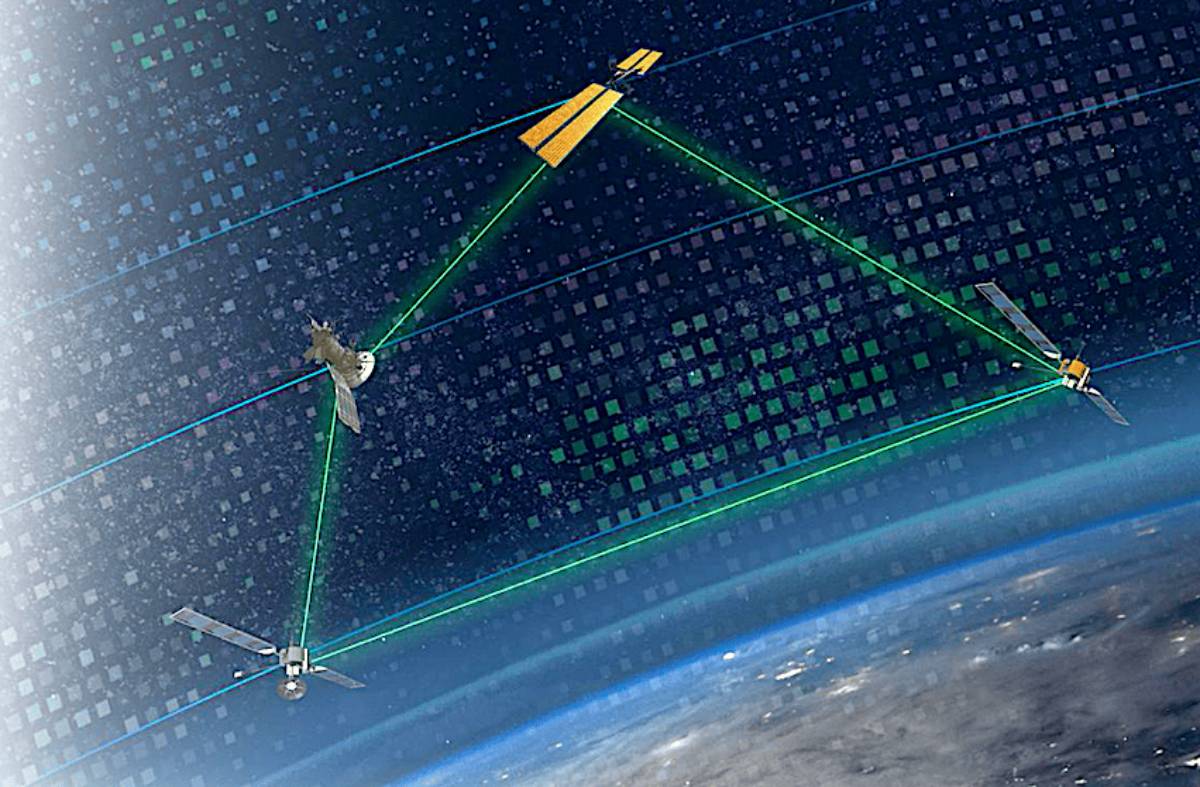Originally published by Space Intel Report on June 25, 2024. Read the original article here.
 (Source: CACI International)
(Source: CACI International)
LA PLATA, Maryland — The U.S. Space Systems Command (SSC) award of four contracts — to Blue Origin, CACI International, General Atomics Electromagnetic Systems (working with L3 Harris and Advanced Space) and Viasat — for development of laser-communications terminals for long-range communications widens the U.S. government push to make laser links a key to future space-to-space and space-to-ground communications.
SSC kicked off its $100-million Enterprise Space Terminal (EST) program on June 17 with the contract notices, adding EST to ongoing U.S. government work, mainly in low Earth orbit, by the Space Development Agency (SDA), the Defense Advanced Research Projects Agency (DARPA), the Air Force Research Laboratory and others.
Multiple commercial and governmental efforts are under way in the United States, Canada, Europe, Japan and China to push lasers into a wide range of communications use cases now relying on radio frequency technology.
Among lasers’ advantages over RF is the security of the link, its high throughput and the fact that optical communications does not need registration with the International Telecommunication Union (ITU). Future communications from the moon and from cislunar space will need much more bandwidth than is currently allocated for RF lunar transmissions.
EST’s goal is to develop small laser communications terminals using an SSC-developed standard that will ensure interoperability of terminals regardless of their manufacturer and extend the operational range beyond LEO “to past the geosynchronous-orbit regime,” said John Kirkemo, senior material leader of SSC’s Advanced Communications Acquisition Delta.
In a June 24 written response to Space Intel Report questions, SSC outlined its program goals for EST. The contracts which were awarded through the SSC Space Enterprise Consortium (SpEC), which SSC said was created “to bridge the cultural gap between military buyers and commercial space startups and small businesses.”
Was this program run separately from the SDA process of forcing interoperability among lasercom producers?
The Enterprise Space Terminal program will leverage significant US government investment in lasercom technology development made to date, including investments made by the SDA, DARPA, and AFRL, among others, to mature compact optical telescopes, lasercom terminal pointing and steering mechanisms, and associated control electronics.
The EST program aims to address the challenge of long-range crosslinks in the beyond Low Earth Orbit (bLEO) regimes for future space platforms at crosslink ranges up to 80,000 km. This objective crosslink range for EST is up to ten times greater than the LEO-to-LEO crosslink ranges implemented in the proliferated LEO constellations and drives additional technical complexity into the designs of the terminals stemming from the need for greater laser beam steering accuracy and greater lasercom receiver sensitivity.
 (Source: General Atomics)
(Source: General Atomics)
The EST program will enforce interoperability among EST lasercom producers by requiring terminal developers to use a lasercom waveform standard developed by Space Systems Command. Furthermore, interoperability between vendor terminals will be evaluated on a US government testbed as part of this program.
Is the primary goal of EST to produce a new type of terminal, or to come up with a new waveform, or are both of equal importance?
The primary goal of EST is to demonstrate the ability to produce a low SWaP-C [size, weight, power and cost] terminal that uses the SSC-standardized waveform for long-range space optical communications, enabling proliferation of the terminal across the space enterprise.
How many bids did you receive in addition to the four winners?
The number of bidders remains Competition Sensitive.
Is the $100m being divided evenly among the four winners? If not, what is the split?
The cost of each contract remains Acquisition Sensitive.
What is the contract duration?
The complete contract is 34 months in duration.
What are the deliverables — in other words, what do the contractors have to demonstrate to you?
There are three phases to the EST program.
The deliverable in Phase 1 is to complete a Preliminary Design Review (PDR) of the terminal within 6 months of ATP.
Phase 2 is to complete a Critical Design Review (CDR) and perform an Optical Module demonstration and Modem demonstration against a Government Testbed, within 15 additional months. Phase 2 will begin immediately after Phase 1 ends in Jan 2025.
Phase 3 is to complete an integrated terminal demonstration and deliver a Prototype in 12 months.
I would imagine there could be a lot of overlap between the SDA’s data transport layer efforts, and its interoperability validation program, and the EST’s requirements. Is that the case?
The EST program is fundamentally a lasercom technology development effort that will enable US government programs of record to procure long-range-capable lasercom terminals for their needs.
While the SDA waveform and terminals support crosslink ranges needed for LEO-to-LEO communications, the EST program aims to address the challenge of long-range crosslinks (up to 80,000 km) in the beyond Low Earth Orbit (bLEO) regimes for future space platforms.
Originally published by Space Intel Report on June 25, 2024. Read the original article here.
